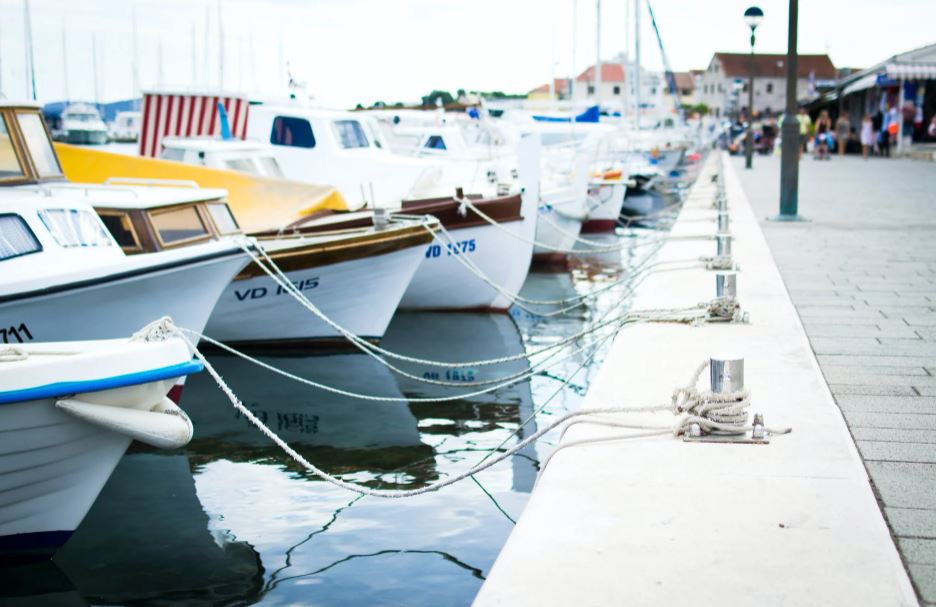Boating is a kind of recreational activity that has a lot of benefits in terms of either physical or business purposes. It was also a kind of vehicle to reach other places through the water. To make this possible, you need a boat first, and the type is up to you or in the class of the event. One of the kinds is the flatboats which were fully utilized before. Of where it came from? Well, here’s a voyage to its origin.
History of Flatboats
In 1782, Jacob Yoder, a farmer from Pennsylvania, was the one who has used the flatboat successfully from Brownsville to New Orleans. Flatboats are mainly rectangular, flat-bottomed boats without keels and single-use. That is why it is kind of weak in durability against the current of the river. Most of the lead miners used this to sell their ore and also flatboats for lumber to build a cabin.
Flatboats are shallow-draft boats which means their bottom is not sinking too far from the surface of the water. The farmers were using it from Midwest and upper South to take their surpluses downriver after the harvest in Summer and Autumn. These are mostly covered to protect the crews and cargo inside. The original ones were just four to six feet in width. Flatboats are also pivotal in Westward expansion. In 1810, about 3,000 flatboats annually were descending the Ohio River. It is also said that earlier flatboats were subject to Indian attacks, so it only had one door, strongly sealed. The windows, if any, were small and had sliding shutters. The walls were pierced with holes wherein the guns could shoot.
Types of Floatboats
Commonly, flatboats are made up of green oak planks with no nails or iron. The standard process, which could be seen in Ohio and Mississippi flatboats, was Chine-girder construction, where a log was split in half to create two gunwales. Flatboats were built in different designs and sizes based on their supposed load and distance reach. It varies in size. The small flatboats are usually long and narrow and are capable of navigating small rivers. Its use is for short trips for about 16’ by 4’ in size and has no covering but has a cooking area. Mid-range flatboats were called broadhorns, Kentucky boats, or Natchez boats and are about 55’ by 16’. This type of flatboat was built for a long voyage and is used by farmers, traders, and moving families. This has a shed for horses, cattle and a cabin for the owners. The largest one was called Mississippi broadhorns, New Orleans boats, barges, and scows or arks. The size was about 100’ by 20’ or more and is mostly covered. Due to its hugeness, it can accommodate freighters, traders, and two or more families with their farm animals. It is composed of four crew and a pilot, and professional flatboat operators that can make three or four trips annually.
The usage
Flatboats are multi-purpose and have served people with big help for their daily lives. Storeboats were used by storekeepers, showboats for the entertainers, chapel-boats by ministers, galleries for the photographers, printshops by printers, floating brothels, wanigans, and the shantyboats wherein families are living. Yet, despite the advantages of this vessel, it also has drawbacks like floating trees, protruding rocks, swift currents, and pirate attacks that affect the Ohio and Mississippi Rivers. Flatboat had increased until the mid-1850s, carrying goods and settlers. Some typical flat-bottom boats are Canal boat, Barge, Bateau, Dory, Gondola, Jon boat, and many more.
Evidently, this means of transportation is cheap and could afford by the merchandizers and moving families before. This vessel only existed until the 1890s because of the locks and dams. Apparently, flatboats were the antecedent of modern models in the line. Mark Wagner, author of “The Wreck of the ‘America’ in Southern Illinois: A Flatboat on the Ohio River” says that “If you could build a log cabin, you could build a flatboat,” For the researchers like Wagner, this vessel is worth a space in the museum and they are working to preserve it. But the preservation will not be easy because it needs to submerge in a vat for up to a year to replace the water with polyethylene glycol.

